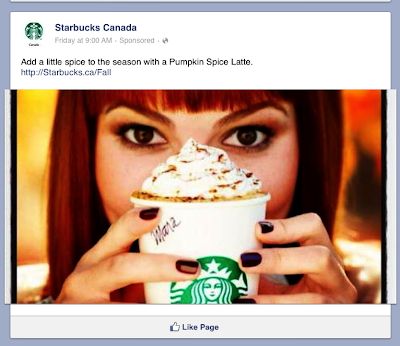It’s clear that we live in a fast moving,
hyper-transparent and digitized age. On all levels. Rapid change is the key defining reality of
our era. Companies either drive it, adapt to it, or succumb to it. Some may
feel threatened by this trend, but we see it as an excellent opportunity for
brands to differentiate themselves.
You just need to know where it’s all going.
It also helps to understand that there are
no real boundaries today between digital marketing, design, content,
advertising, retail design and other disciplines. The distinctions are
artificial. In fact, for the consumer, almost every moment in their day-to-day
life involves an interaction with a brand, and all are equally important. Every
touch point must therefore be carefully created to provide a rich and
consistent experience.
If, as Marshall McLuhan espoused, “the media is the message” then the consumer is the medium today. Positive endorsement from other consumers is the most powerful media available to brands. This is especially true in today’s content- saturated world. Audiences are no longer swayed by messaging - it takes coherent, immersive experiences that create conversational capital. Brands must earn consumer attention by providing value in the form of entertainment, information, and utility.
That said, to assist in navigating through this rapidly changing competitive environment here are our predictions for 2015.
If, as Marshall McLuhan espoused, “the media is the message” then the consumer is the medium today. Positive endorsement from other consumers is the most powerful media available to brands. This is especially true in today’s content- saturated world. Audiences are no longer swayed by messaging - it takes coherent, immersive experiences that create conversational capital. Brands must earn consumer attention by providing value in the form of entertainment, information, and utility.
That said, to assist in navigating through this rapidly changing competitive environment here are our predictions for 2015.
Mobile-optimization
Optimizing for mobile has been a significant
priority for businesses in 2014, but 2015 will be the year that mobile
strategies move beyond simply having a responsive site or mobile app, and focus
on mobile-optimized content and social media marketing as well.
We know that Google has been placing
additional emphasis on how mobile-friendly sites are; in fact, they’ve stated
that mobile usability is now “relevant for optimal search results.” This
emphasis is apparent in the recent launch of a new feature in Google Webmaster
Tools called Mobile Usability.
2015 will see businesses finally incorporating
mobile into all areas of their digital marketing: a fully responsive
website, mobile ads, and separate content specifically for mobile website
users. Businesses will also begin to realize the necessity of having a mobile
social media strategy that considers how mobile users consume and interact with
social media posts.
Social media spend
will increase significantly
Brands will finally realize the importance of
social media marketing. As organic
post reach continues to fall, and as platforms like Facebook further restrict
what types of posts can be shown in users’ feeds, paid advertising is only
going to increase as businesses struggle to maintain traffic and sales from
social media channels.
Some businesses are seeing positive
results from their investment in social media (some are not),
including increased exposure and traffic, and are seeing paid social ads as the
way to scale these results.
Twitter’s new advertising options (beta) for example has transactional
payment triggered by specific actions like website clicks, app downloads and
email opt-ins. This will mean
small to medium-sized businesses will be far more likely to invest in these
objective-based campaigns. Note
also that Micro-sites
will also be used far more in 2015 for promotional activities as they help
direct traffic to the main site and thus facilitate or bolster it’s popularity.
Inbound + Content
marketing will be (even) bigger than ever
According to the B2B Content Marketing
Benchmarks report, 93% of B2B marketers said they used content marketing in
2014, and 42% said they considered their strategy effective (up from 36% last
year).
As marketers continue to see the benefits of their content
strategies, a portion of the money previously earmarked for search
engine PPC, SEO and social media reach will be re-allocated to content
marketing efforts. A major
struggle, however, will be finding ways to stand out amidst the throngs of
other content vying for attention. Case studies, video content,
research-intensive content, and authoritative content will be what give
businesses an advantage over their competitors.
Businesses will also increasingly be willing
to invest in mobile-specific content, including creating short-form content
that’s easily readable on mobile devices, understanding their audience’s mobile
habits and putting more emphasis on video and visual content that’s easily
consumed via mobile.
Email marketing will
receive a renewed focus
With social networks reducing the amount of
visibility brands and businesses receive and with search engines intimidating
business owners and marketers with ever-increasing complexity of their ranking
algorithms, businesses will return to the one marketing asset that they can
control entirely; their email list. This renewed focus on email marketing will
intertwine with content marketing to blur the lines between e-mail and content
marketing.
As brands realize the value of content
marketing, they’ll begin to discover ways to streamline their email content in
order to avoid redundancy. One way
in which they’ll do this is to repurpose existing content into downloadable
PDF’s (such as whitepapers or value-added content), which can be offered as
opt-in incentives to build an email list.
Brands will also begin to realize the
necessity of differentiating themselves from their competitors when it comes to
email marketing. In HubSpot’s 2014 Science
of Email report, respondents reported a significant decline in how
often they bought a product or service from email messages they had received
(35% said “never” in 2014 compared to 25% in 2011). This finding underlines the
importance of businesses employing creative, relationship-based strategies to
their email marketing rather than just attempting to make a quick sale. Think “less shotgun, more sniper
rifle.”
The lines between
SEO, content marketing and social media will become even more blurred
SEO and content marketing will continue to
co-exist as two separate but intertwined disciplines that rely on each other
for success. That said, content marketing is now the primary influencer of
search visibility. Businesses that don’t invest in a solid content strategy
will discover that their SEO campaigns are ineffective, at best, and damaging
to their search visibility, at worst.
SEO will come to be seen more as a subset of
online marketing, dealing with technical aspects such as meta-tags, indexing
issues, penalty recovery, and keyword research. Social media, on the other
hand, will come to be seen as a necessary amplifier of any content strategy.
While businesses have been focused on creating high-quality content, less focus
has been given to promoting and distributing that content.
Businesses will also increasingly realize the other
important benefit of social media, including increased brand
recognition and brand authority, improved customer insights and higher
conversion rates.
Brands will scramble
to humanize
With the rise of social media, brands will
realize that their customers are on social media channels to interact with
other people, not with brands and corporate-sounding lingo. Brands that are able
to connect with their audience on a human-level
will enjoy higher conversion rates, better brand loyalty, faster audience
growth, and happier customers.
A company’s ability to humanize their brand
(and find their unique brand voice) will be the single most important success
factor using social media in 2015. Brands who engage and develop authentic
relationships with their fans, followers and email subscribers will see
tremendous benefits, all of which will ultimately increase their bottom line
and ROI.
Marketers will find
new ways of making native advertising more relevant (and less promotional)
With steadily decreasing click-through rates
(CTR) over the past few years, businesses are realizing the ineffectiveness of banner
advertising for driving sales. While increased visibility is still a
benefit of banner ads, small to medium-sized business looking for results will
be less inclined to invest in channels that don’t offer a calculable ROI.
With the increase in popularity of native
ads, marketers and publishers will constantly be looking for new ways to mimic
editorial content while remaining transparent to website visitors. 2015 will
see collaborations between publishers and brands whereby sponsored content is
specifically created to be shown alongside the primary content; in this way,
native ads will not be promotional in nature, but instead will offer relevant
and engaging supplementary content.
More and more, marketing and communications
must widen their horizons and embrace the fact that, for brands, speaking to
“consumers” is just not enough. Yes, we all are consumers and most of us accept
this reality. But a more meaningful way of engaging people is to recognize that
they are also, if not primarily, humans, fans, users, visitors, or guests
(depending on the context). Your ability to develop rich experiences is rooted
in this understanding. Ultimately,
focus less on crafting moments and more on creating movements.
Have questions? We’re here to help.
Drop us a line at info@goodbuzz.ca
or follow us on Facebook or Twitter.











.jpg)



.jpg)















